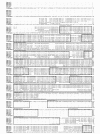Unusual duplication of the insulin-like receptor in the crustacean Daphnia pulex
- PMID: 20939922
- PMCID: PMC2978223
- DOI: 10.1186/1471-2148-10-305
Unusual duplication of the insulin-like receptor in the crustacean Daphnia pulex
Abstract
Background: The insulin signaling pathway (ISP) has a key role in major physiological events like carbohydrate metabolism and growth regulation. The ISP has been well described in vertebrates and in a few invertebrate model organisms but remains largely unexplored in non-model invertebrates. This study is the first detailed genomic study of this pathway in a crustacean species, Daphnia pulex.
Results: The Daphnia pulex draft genome sequence assembly was scanned for major components of the ISP with a special attention to the insulin-like receptor. Twenty three putative genes are reported. The pathway appears to be generally well conserved as genes found in other invertebrates are present. Major findings include a lower number of insulin-like peptides in Daphnia as compared to other invertebrates and the presence of multiple insulin-like receptors (InR), with four genes as opposed to a single one in other invertebrates. Genes encoding for the Dappu_InR are likely the result of three duplication events and bear some unusual features. Dappu_InR-4 has undergone extensive evolutionary divergence and lacks the conserved site of the catalytic domain of the receptor tyrosine kinase. Dappu_InR-1 has a large insert and lacks the transmembranal domain in the β-subunit. This domain is also absent in Dappu_InR-3. Dappu_InR-2 is characterized by the absence of the cystein-rich region. Real-time q-PCR confirmed the expression of all four receptors. EST analyses of cDNA libraries revealed that the four receptors were differently expressed under various conditions.
Conclusions: Duplications of the insulin receptor genes might represent an important evolutionary innovation in Daphnia as they are known to exhibit extensive phenotypic plasticity in body size and in the size of defensive structures in response to predation.
Figures




Similar articles
-
Annotation, phylogenetics, and expression of the nuclear receptors in Daphnia pulex.BMC Genomics. 2009 Oct 28;10:500. doi: 10.1186/1471-2164-10-500. BMC Genomics. 2009. PMID: 19863811 Free PMC article.
-
Characterisation and pharmacological analysis of a crustacean G protein-coupled receptor: the red pigment-concentrating hormone receptor of Daphnia pulex.Sci Rep. 2017 Jul 31;7(1):6851. doi: 10.1038/s41598-017-06805-9. Sci Rep. 2017. PMID: 28761110 Free PMC article.
-
Interaction of the red pigment-concentrating hormone of the crustacean Daphnia pulex, with its cognate receptor, Dappu-RPCHR: A nuclear magnetic resonance and modeling study.Int J Biol Macromol. 2018 Jan;106:969-978. doi: 10.1016/j.ijbiomac.2017.08.103. Epub 2017 Aug 22. Int J Biol Macromol. 2018. PMID: 28837848
-
Insulin-related peptides and their conserved signal transduction pathway.Peptides. 2002 Apr;23(4):807-16. doi: 10.1016/s0196-9781(01)00666-0. Peptides. 2002. PMID: 11897402 Review.
-
The water flea Daphnia--a 'new' model system for ecology and evolution?J Biol. 2010;9(2):21. doi: 10.1186/jbiol212. Epub 2010 Jan 13. J Biol. 2010. PMID: 20478012 Free PMC article. Review.
Cited by
-
Insulin-like Peptide Receptor (ILPR) in the Cuttlefish Sepiella japonica: Characterization, Expression, and Regulation of Reproduction.Int J Mol Sci. 2022 Oct 26;23(21):12903. doi: 10.3390/ijms232112903. Int J Mol Sci. 2022. PMID: 36361695 Free PMC article.
-
Insulin receptor-like ectodomain genes and splice variants are found in both arthropods and human brain cDNA.J Syst Evol. 2013 Nov;51(6):664-670. doi: 10.1111/jse.12048. Epub 2013 Sep 2. J Syst Evol. 2013. PMID: 27375681 Free PMC article.
-
A chromosome-level assembly of the black tiger shrimp (Penaeus monodon) genome facilitates the identification of growth-associated genes.Mol Ecol Resour. 2021 Jul;21(5):1620-1640. doi: 10.1111/1755-0998.13357. Epub 2021 Mar 16. Mol Ecol Resour. 2021. PMID: 33586292 Free PMC article.
-
Tryptophan hydroxylase (TRH) loss of function mutations induce growth and behavioral defects in Daphnia magna.Sci Rep. 2018 Jan 24;8(1):1518. doi: 10.1038/s41598-018-19778-0. Sci Rep. 2018. PMID: 29367674 Free PMC article.
-
The good, the bad, and the toxic: approaching hormesis in Daphnia magna exposed to an energetic compound.Environ Sci Technol. 2013 Aug 20;47(16):9424-33. doi: 10.1021/es401115q. Epub 2013 Jul 30. Environ Sci Technol. 2013. PMID: 23898970 Free PMC article.
References
Publication types
MeSH terms
Substances
LinkOut - more resources
Full Text Sources
Research Materials

